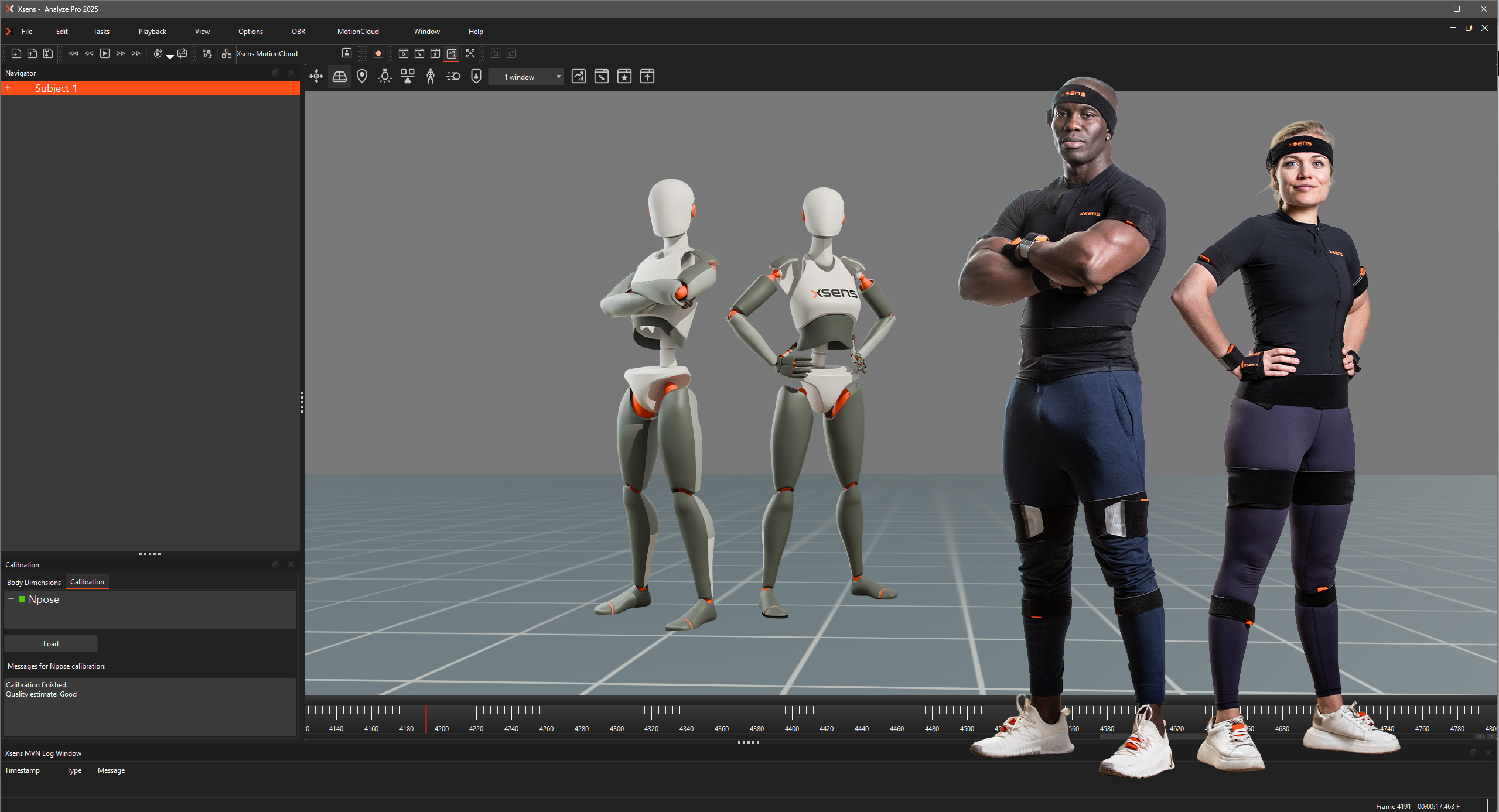Discover the latest Xsens whitepaper on the updated biomechanical model - now featuring male and female versions, spine updates, and improved gait parameters.
Human movement is full of subtle patterns, variations, and anatomical differences. That’s why with the new Xsens Analyze release, we’ve taken a major step forward: introducing the first natively integrated male and female anatomical models on the inertial motion capture market. Optimized for spine and upper-body kinematics, this marks the launch of Biomech 2.0.
You can dive deep into the update with the whitepaper, or keep reading the blog for major changes.
Let’s explore what’s changed, why it matters, and how this update lays the foundation for even more meaningful motion capture insights.

Why update the biomechanical model?
Xsens inertial motion capture has revolutionized the way we digitize motion — offering freedom from confined lab spaces and bringing biomechanics into the real world. At the heart of our Xsens system is the biomechanical model: a digital representation of the human body that translates sensor data into meaningful movement.
Our original model was based primarily on male anatomy. That posed limitations in accuracy, especially for female subjects or applications requiring high precision, such as rehabilitation, ergonomics, or upper-body movement analysis.
The new Biomech 2.0 models tackle this head-on with:
- Dedicated male and female anthropometry
- A refined spine model with more physiological S-to-C-shape behaviour
- More accurate scaling for arms, hips, and shoulders
What’s new in Biomech 2.0?
1. Male and female anatomical models
We’ve developed two distinct biomechanical models based on anatomical datasets of living male and female subjects. These models include:
- Male and female-anatomy-specific segment lengths
- Updated segment mass and center-of-mass (CoM) locations
By doing this, the models scale closer to a participant’s real-world anthropometry using just their body height and foot length — simplifying setup while improving accuracy.
Impact:
- Improved upper-limb estimated body dimension: Errors in arm span were reduced by ~50%, dropping the errors below 3%, while errors in wrist and elbow span dropped below 5% and 2.2%, respectively
- Inter-hand distance accuracy improved by ~40% during clapping motions
2. Smarter spine modeling
The spine isn’t static—it flexes, bends, and curves in complex ways. To capture this nuance, we’ve refined our spine model:
- Refined model that includes the lumbopelvic rhythm
- Improved representation of natural motion, thanks to adjusted segment length and spine segment orientation
- Adjusted attachment points for shoulders, enabling better upper-body kinematics
Impact:
- Increased spine range of motion with shoulder-to-ground distance during trunk flexion improved by ~2cm.
- Better posture analysis and realistic spine curvature, reflecting the S-to-C-shape during bending motion
3. Improved gait parameters
While lower-body joint angles remain largely consistent, updated hip dimensions (especially in the female model) lead to better estimates of spatiotemporal gait parameters like step length and step width.
Impact:
- Step width accuracy improved by 1.0 cm for females and 0.5 cm overall
- Enhanced gait realism in applications like rehab, sports science, and ergonomics
Why this matters
The introduction of gender-specific models marks a major step forward in creating more inclusive biomechanical models. These not only enhance the performance and reliability of Xsens software, but also pave the way for more personalized and accurate assessments, which in biomechanical modeling isn’t just “nice to have”— it is critical for high-stakes applications:
In healthcare and ergonomics: More precise assessments for physical therapy and injury prevention
In research: More objective data for hypothesis testing and publications
In robotics and simulation: Better human models for training, interaction, and AI learning
With Biomech 2.0, Xsens software is better equipped than ever to meet the needs of scientists, researchers, and innovators across disciplines.
Go deeper
This blog gives you a sneak peek—but if you're craving the details, dive into our whitepaper for:
- Further details on the gender-specific anthropometries and model refinements
- Validation studies comparing Biomech 1.0 and Biomech 2.0 with Optical Motion capture system
- Technical data on model performance
Ready to move smarter?
The new biomechanical models are available now in Xsens Analyze 2025. Whether you're capturing movement in a lab, clinic, or remote field setting — Biomech 2.0 helps you turn motion into deeper, more reliable insights.